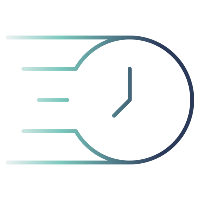Regain Control of Your Heart Rhythm with Private Ablation at One Heart Clinic
Fast, expert treatment for arrhythmias.
Tired of palpitations, dizziness, or fatigue? This may be a sign of an abnormal heart rhythm. Cardiac ablation can help control your arrhythmia caused by abnormal electrical signals in your heart. Using catheters, our experts can treat your irregular heartbeat with minimally invasive procedures that can often be done as either a day case or an overnight stay to restore your natural heart rhythm. With ablation private treatment, you can skip NHS waits and get back on the road to a healthier heart rhythm.
Our concierge approach to service and tailored packages give you peace of mind, allowing you to focus on your treatment & recovery.
At One Heart Clinic, we deliver top-tier ablation care:

Tests and procedure within 7 days - no NHS delays.

Our cardiologists are leaders in catheter ablation – they are high volume operators at leading centres in the UK.

We tailor our approach to your arrhythmia. The catheter ablation private cost at OHC means faster, better care.
Your arrhythmia treatment is led by OHC’s specialists:

Award winning Consultant Cardiologist & Electrophysiologist. Highly experienced operator. Earned his medical degree from Cambridge in 1999.

Arrhythmia specialist known for over 1000 successful ablations and excellent standards of patient care.

Specialist in heart rhythm disturbances. High volume operator at Barts Heart Centre, one of the largest cardiovascular units in Europe.
ablations performed in private hospitals alone.
cases for ablations and pacemakers combined.
complication rate.
Real people, real outcomes - OHC delivers.
Ready to fix your heartbeat?
AThe cost of private catheter ablation in the UK with OHC includes the procedure, expert care, and a short stay (often overnight). With ablation private cost UK, you’re investing in a steady heart, fast.

Schedule your consultation today.

Tests (ECG, Echo) confirm ablation fits your arrhythmia.

A 3-6 hour procedure, then rest and go home - often the next day.
OHC keeps it smooth and simple.
First, you will meet the team looking after you during your procedure and provide your consent. You will be introduced to everyone in the theatre involved in your care.
You will lie on the operating table and be given an anaesthetic. This could be local or general, depending on what is best for you and the type of ablation you are having. Your cardiologist will begin by making a small incision in your wrist, arm, or groin to access an artery with a thin tube. Your operator will thread a thin tube (catheter) into your heart. They will then strategically apply the treatment method depending on where your arrhythmia is coming from. It could be heat, cold, or electric pulses that are used to treat the areas causing the irregular rhythm.
The procedure will usually take 1–3 hours. You will then be taken to a ward to recover where you will be monitored by the inpatient team who will take care of you, answer any questions you might have, and notify you when you can go home. You will usually stay overnight and be discharged the next day.
Cardiac ablation is a procedure used to treat abnormal heart rhythms (arrhythmias). It works by targeting and destroying small areas of heart tissue that are causing the irregular electrical signals. The type of ablation you need depends on your symptoms.
Here is a breakdown of the most common types:
How it works: Uses heat (radiofrequency energy) to destroy the problematic tissue.
Used for: Most common arrhythmias like atrial fibrillation, atrial flutter, and certain types of supraventricular tachycardia (SVT).
Why it’s used: Safe, effective, and widely available.
How it works: Uses extreme cold to freeze and disable the faulty electrical pathways.
Used for: Often used in treating atrial fibrillation, especially around the pulmonary veins.
Why it’s used: Less risk of damaging nearby tissues; useful in certain areas of the heart where precision is key.
How it works: Instead of using heat (like radiofrequency) or cold (like cryoablation), PFA uses short, high-voltage electrical pulses to create tiny pores in heart cells, which disrupts abnormal electrical signals and selectively destroys unwanted tissue.
Used for: Often used in treating atrial fibrillation.
Why it’s used: This treatment is non-thermal. It doesn’t use heat or freezing, so there’s less risk of damaging nearby tissues. It can be faster than other types of ablations. The pulses are delivered very quickly, often making the procedure shorter than traditional ablation methods.
Cardiac ablation with OHC is generally a safe and well-tolerated procedure, especially when performed by an experienced team. Our operator’s complication rate is less than 1% for ablations. Your cardiologist will explain these risks in detail during your consultation, ensuring you feel confident and informed before proceeding. However, like any medical procedure, it does carry some risks.
Here’s a summary of general risks:
Ablation at OHC offers significant benefits for patients with arrhythmias, helping you regain a steady heartbeat and improve your life. If you’re living with a heart rhythm problem (arrhythmia), cardiac ablation can offer relief, peace of mind, and a path back to feeling like yourself again.
Here’s how it can help:
Relief from Symptoms: Ablation can reduce or eliminate symptoms that interfere with your life, like heart racing or fluttering, shortness of breath, fatigue, and light-headedness or fainting. Many people feel dramatic improvement in their daily energy and comfort.
Lower Risk of Stroke and Heart Failure: Especially for people with atrial fibrillation, successful ablation can reduce stroke risk and help the heart pump more effectively.
Reduced Need for Medications: Ablation can lower your reliance on long-term medications (like antiarrhythmics), which may have side effects or not work well.
Improved Quality of Life: Feel more confident being active, travelling, or simply enjoying everyday activities. Many patients report a renewed sense of freedom and well-being after ablation.
In many cases, ablation significantly reduces or completely stops the arrhythmia for our patients. Some people may need a repeat procedure, but success rates are high—especially for conditions like atrial fibrillation or SVT. It is common to have some irregular rhythms during the first 6–8 weeks after your procedure. This is known as the “blanking period” - your heart is healing and may still be a bit irritated. That doesn’t mean the ablation didn’t work.
Some patients feel better immediately, especially if they had frequent symptoms before. Others may still feel occasional irregular heartbeats in the first few weeks—this is normal as your heart adjusts. Feeling tired or drained for a few days (or even a week or two) is common. Your body needs time to heal, even though the procedure is minimally invasive. Rest is part of the recovery.
We’re here for you. Please don’t hesitate to call our office or speak with your patient concierge. Your peace of mind is just as important as your physical health. Cardiac ablation is a safe and effective treatment that can greatly improve your quality of life. Your doctor will guide you every step of the way and answer all your questions, so you’re never going through this alone.